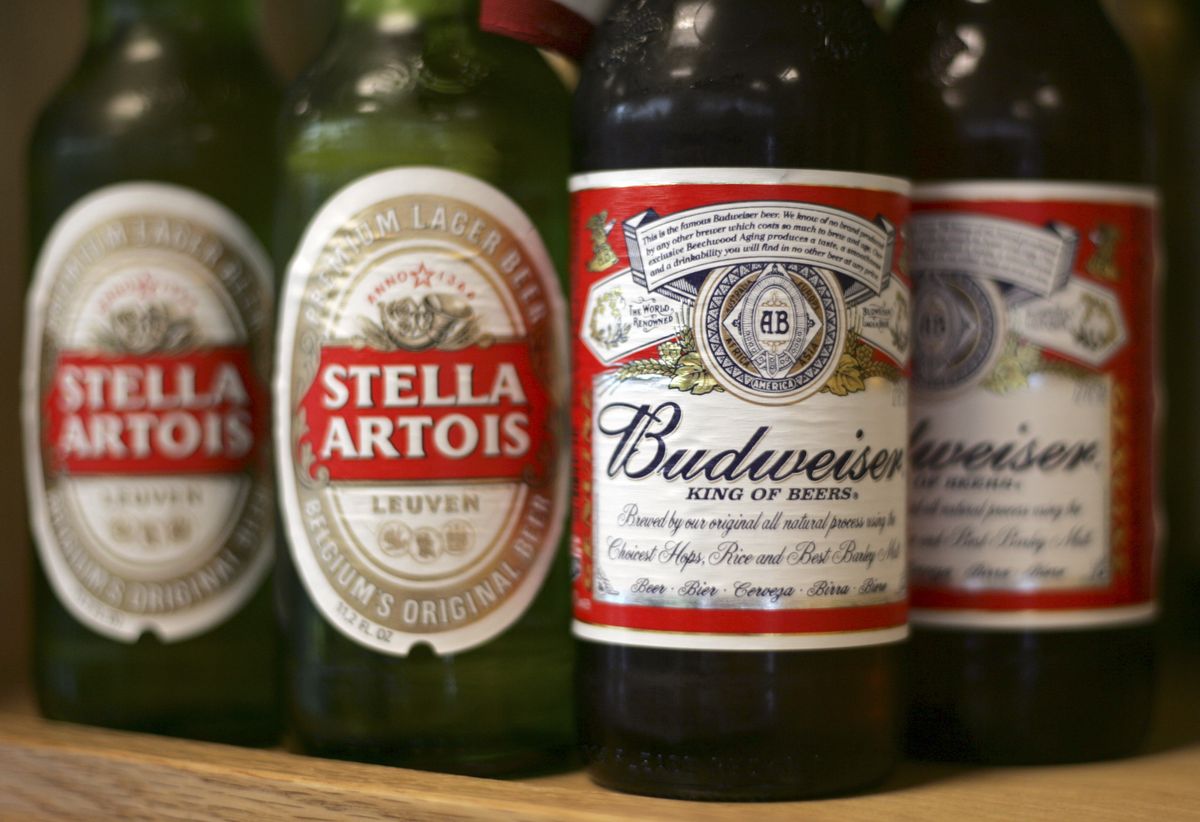Belgian bid satisfies Bud owners
Anheuser-Busch InBev to become world’s largest brewer

ST. LOUIS – The King of Beers, the folks who spent lavishly to bring you the Bud Bowl, the Talking Frogs, the Whassup Guys and the Clydesdales, is being swallowed by a Belgian brewer known for its frugality.
But InBev SA has an ambitious plan behind its $52 billion acquisition of Anheuser-Busch, hoping to tap into the U.S. company’s marketing power and make the Budweiser and Bud Light brands into globally recognized products akin to Coca-Cola or Pepsi.
Leaving marketing untouched, though, will mean cuts elsewhere. InBev expects to wring out $1.5 billion in annual savings, most of which will come from better managing the supply chain. InBev keeps a sharp eye on costs, forcing managers to justify every cent spent.
Anheuser-Busch Cos. agreed to the sweetened $70 per share bid lateSunday to create the world’s largest brewer – to be called Anheuser-Busch InBev – and head off what was shaping up as a bitter fight. Swallowing Anheuser-Busch will give InBev – the maker of brands including Stella Artois, Beck’s and Bass – half the U.S. beer market and a fifth of those in China and Russia.
Gaining control of an iconic beer brand, Budweiser, to sell into emerging markets such as China and Brazil was a key part of the deal, said InBev Chief Executive Carlos Brito, who will retain his position.
“What consumers care is that their Bud will always be their Bud, and that’s what we’re committed to, not only the product, the quality, the beer … but also the heritage, the breweries, who brews the beers, and everything that’s connected to the breweries,” Brito said Monday.
That image has been built by spending heavily on marketing. Industry estimates put Anheuser’s U.S. spending last year at $378 million, said Benj Steinman, editor of the Beer Marketer’s Insights trade publication. That’s more than the combined spending of its biggest rivals, Miller Brewing Co. and Molson Coors Brewing Co.
Those marketing successes have coined popular phrases such as “This Bud’s for you,” its Clydesdale horses are a fixture of Super Bowl ads and the Bud logo adorns sports events from NASCAR to Ultimate Fighting.
“This deal is transformational for InBev, not just because of the scale and the economic scope that this gives them, but because InBev is seeking to become more of a marketing-based culture,” said Steinman.
Brito made his commitment clear Monday, saying InBev has no plans to trim advertising in the United States.
“What we see in Anheuser-Busch is its marketing expertise, and that’s one of the pillars of why they built such great brands,” Brito said.
Still, some experts questioned whether InBev can really hold off indefinitely.
With the U.S. economy slowing, InBev might constrain spending on sports endorsements, said John Sweeney, director of sports communication at University of North Carolina’s School of Journalism.
InBev said it plans to use St. Louis as its North American headquarters and that it will keep open all 12 Anheuser-Busch North American breweries.
Brito tried to reassure workers worried about possible job losses, saying the company could instead expect “growth and investment” despite Anheuser-Busch’s existing plans to shed 1,185 positions – mostly by offering early retirement and not filling existing vacancies.